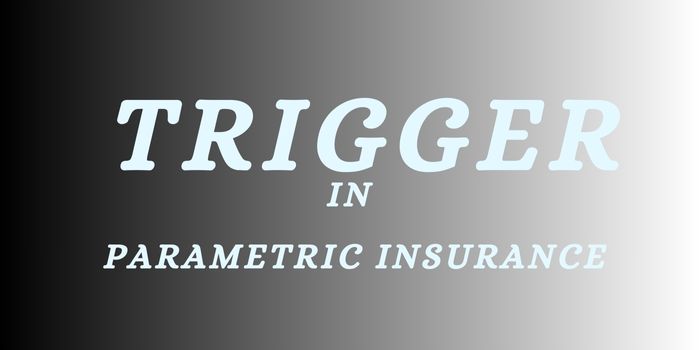Most of us will have heard of parametric insurance in one way or another, and based on some of the extreme weather that we’ve seen globally this year, its relevance within the insurance market is clearer than ever. But how much do you know about the technology underpinning this innovative coverage? Here we will learn more about why there has been a drive in demand for parametrics and how they build parametric solutions.

In parametric insurance, a “trigger” is a predefined measurable condition such as wind speed, rainfall level, or earthquake magnitude that, once reached or exceeded, automatically initiates a payout, making the process faster and more transparent than traditional claims methods.
Traditional Insurance Vs Parametric Insurance
Trigger in Parametric Insurance: Definition and Examples
In parametric insurance, parameters and triggers are related, but they are not the same thing.
Parameters → These are the measurable data points used to define the conditions of the policy.
Example: wind speed, rainfall amount, earthquake magnitude, river water level, etc.
Trigger → This is the specific threshold or condition of a parameter that, when met or exceeded, activates the payout.
Example: If wind speed ≥ 150 km/h at the insured location, the policy pays out.
Independent Triggers for Parametric Policies
A lot of the parametric policies are all about the triggers and making sure that we have an independent trigger that is recorded or reported by an independent party. It tends to be more around the weather perils like cyclones, earthquakes, floods and now even in the renewable space, lack of sunshine or lack of wind speed. All these things can be done.
Exploring Non Weather Related Parametric Policies:
We are always trying to come up with non weather related parametric policies. Things we have been looking at in the past include something for the hotel industries called RevPAR, an industry body that reports on revenue per available room. We are trying to do a parametric policy on this, where if a hotel within a state experiences a drop in the state’s RevPAR for a certain event, they can be compensated for losses.
Tourism and Foot Traffic Triggers:
In London, we explored possibilities around football traffic after terrorism events. When people don’t go to London, there can be an issue for local businesses. We looked into whether there is a measure of footfall or customers going past a shop that could be used as a trigger. We found that passenger numbers from Heathrow Airport could serve as a potential trigger for payouts after a tourism-related event.
Challenges in Finding Suitable Triggers:
The idea was that after a terrorism event, passenger numbers would drop, triggering a payout. However, after all terrorism events, Heathrow Airport numbers didn’t drop significantly. People with booked holidays or work trips continued to travel. This meant the trigger wasn’t viable, so we had to go back and work on another solution.
Where and Why is There a Need for Parametric Insurance:
Parametric insurance enables you to protect assets or other exposures where you don’t necessarily have a loss history. Traditional insurance pays off on loss, after a loss adjustment process. Parametric insurance pays on events when something happens, and you get paid a set amount making it much simpler, especially in markets with limited insurance penetration.
Benefits to Insurer and Insured:
Parametric products enable the insured to take a proactive view of risk, knowing the set payout and being able to anticipate financial challenges. For insurers, losses are capped and payouts are predictable, making it easier to offer such products.
Complementarity with Traditional Insurance:
Traditional insurance covers actual losses but can take time due to loss adjustments. Parametrics pay quickly when the event occurs, aiding business continuity. Together, they provide both immediate liquidity and full loss coverage.
Technical Specifics and Triggers:
For parametric flooding solutions, an independent and observable trigger is essential. Flooding is complex to evaluate, so objective, globally available datasets are often used for transparency and trust. In markets without long loss histories, event history can be used instead.
Challenges and Basis Risk:
Both parametric and indemnity insurance involve basis risk. In parametrics, the client must agree the trigger matches their needs. Flood products may rely on water meters, satellites, or models, with trade-offs in precision, cost, and availability. The goal is balancing client needs with what the insurer can deliver.
Conclusion:
Building trust, ensuring transparent triggers, and aligning product design with client needs are central to success. In parametric insurance, triggers are the clearly defined thresholds for measurable parameters such as wind speed, rainfall, or earthquake magnitude that determine when a payout is made. Well designed triggers ensure that claims are processed objectively and efficiently, reducing disputes and speeding up recovery.”